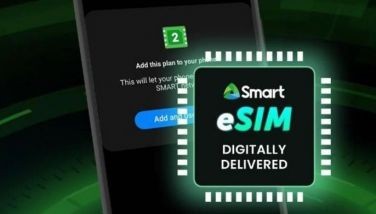Myths of mobility : Is workforce mobility overrated?
January 7, 2006 | 12:00am
To understand the impact of mobile technology in today’s workforce one needs to refresh one’s memory of workplace realities barely a decade ago.
You are running late for an early morning meeting and you’re stuck in a traffic jam on the highway. At the rate the vehicles are moving inch by inch, you know that you will arrive early for a lunch appointment instead. Your boss is already flooding your beeper with "Where are you?" messages. What to do? Find a public calling office (where you have to line up for an hour to make a call) to inform your boss of your plight, make a beeline for the next public calling booth (just make sure you have enough coins to insert into the machine or that the machine itself is not busted itself), or ignore the beeps and pray that no walking papers will be waiting at your desk the next morning.
You are a traveling sales executive making a pitch to a prospective client in a city outside Metro Manila. You need data back at the corporate headquarters that the client is asking. You have no choice but to make a costly long-distance call to your office. Pray that it won’t take the secretary too long to locate it in your PC or somebody else’s computer or that the person who handles the data itself is not on leave. Pray, too, that in the restaurant where you are making the sales presentation, there is a phone to begin with and they will allow you to make the expensive call.
Then came the Internet, mobile phones, personal digital assistants, notebook computers, Wi-Fi hot spots and text messaging. Even our personal lives have become synonymous to a high-speed broadband connection – always on, always available, 24x7.
The workplace in 2006 is a highly connected constellation searching for wholeness.
Do we really need all these gadgets? Are we turning into technology’s slaves at the mercy of our machines always looking to move up the technology chain, raising the bar of connectivity in an increasingly high-tech planet?
Yet surprisingly, not a few enterprises refuse to budge from their well-entrenched pre-Internet, pre-cellphone mindset and see few benefits of a highly mobile workforce.
"Today, many decision-makers believe that mobility is not cost-effective, not secure and is a nightmare to manage," Mathia Nalappan, Nokia Enterprise Solutions’ vice president for Asia-Pacific, said in a statement. "These notions are based on assumptions from fragmented sources and second-hand comments."
As such, Nokia published a white paper last month entitled "Myths of Mobility," which is aimed at helping enterprises understand the reality of mobile technology.
Myth No. 1: "Mobilizing an organization’s workforce is costly and investments may not be offset by savings from resulting efficiencies."
Nokia says: "Enterprise mobility is highly cost-effective, helping streamline the work process, reduce dependence on paper and enhance automation."
What the paper is saying is that purchasing mobile gadgets for each employee without a coherent strategy is, indeed, costly. But when a company’s mobile plan is integrated into the overall IT strategy that factors in cost, potential return on investment (ROI), productivity and efficiency gains, it becomes a sensible investment.
"Viewing mobility as part of a company’s overall IT infrastructure, creating a platform for achieving tomorrow’s mobilization goals is the key, the report said.
For one, mobile plans for a corporate account are typically lower than normal consumer rates. Because they are a bulk subscription, the phones are usually given free plus you get value-added services for locking in the subscription for a definite period, usually two to three years.
Call rates are also generally cheaper within a single network. If your entire sales force, for example, is only subscribed to one mobile operator, voice call and SMS chargers are generally lower, generating further cost savings.
Enterprise mobility is also affordable on the high-end side. The report cited that for the cost of a single Nokia Business Center server, an unlimited number of employees with supported Nokia devices can use the free client software that enables them to connect to mobile e-mail.
Contrary to the popular assumption that wireless technology only delivers "soft" benefits such as timely access to corporate data or information, speed and efficiency in handling business processes and connectivity, Nokia said that going mobile also delivers "hard" benefits.
More efficient employees, it said, are better able to offer good customer service that can result in increased revenue or reduced operational cost.
Myth No. 2: Only a select group of businesses should capitalize on the benefits of mobility.
Nokia says: "Mobile technology is no longer simply a tool for corner office executives. Mobile usage is steadily rising within most organizations, and tends to be consistent across professions."
Research tracker IDC, in fact, reported that by 2009, there will be more than 878 million mobile workers worldwide. With mobility going mainstream, Nokia believes that organizations of all types and sizes can benefit from it through "increased flexibility and responsiveness."
Small business can achieve competitive advantage by offering better customer service, while in large organizations, workers can use mobile gadgets and applications to improve work processes across departments. However, industries that can benefit the most from a mobile workforce include those that have branches of operations across the country, those that offer field service jobs, and those that maintain a large sales and marketing team.
Statistics show that most of these employees spend as much as one-third or more of their time away from their desks or home base. Supplementing their fixed-line phones with mobile devices would dramatically increase the availability of these employees to their supervisors or clients.
According to the report, Fujitsu field engineers in Australia and New Zealand connect to their company’s operative processes via the GPRS-enabled Nokia 9399 smartphone. By enabling its fleet of engineers to access multiple company backend systems with Nokia devices, Fujitsu "has seen a dramatic reduction in errors and costs and an increase in productivity."
Myth No. 3: "Laptop computers are the most effective mobile devices for employees on the go."
Nokia says: "Not necessarily." A new generation of mobile devices now offers similar capabilities as laptops, while providing even greater convenience and mobility to the user. Employees can now access advanced applications through their mobile devices such as e-mail, calendar, contacts and memos, allowing them to connect to the office or clients easily while on the road.
Smartphones are also getting smarter, according to Nokia, and most already have full attributes of a laptop such as keyboard, color screen, multimedia, conference call, speakerphone capabilities, and Internet.
Most mobile devices now also work on traditional IP networks, allowing them to connect to Wi-Fi, for example.
"Wireless data networks using a protocol like GPRS are widely available almost everywhere in the world with faster networks using EDGE and other 3G technologies appearing in more places every day," the report said.
Myth No. 4: "Many employees are often using their own personal mobile phones for work without reimbursement for the cost of the device or service. There is no need for the company to be involved."
Nokia says: "It is true that employees are often using personal mobile phones for work without reimbursement. But the IT department should be taking a more active role in the selection and usage of employee mobile devices. Without oversight, the companies risk a variety of cost and security issues."
In an enterprise with a sound IT strategy, it is important that machines, office equipment and mobile gadgets are standardized and compatible to the network. This results in a significant cost savings and ensures that voice and data that will flow across departments are secure.
Different people using mobile phones subscribed to different telecom companies makes it more expensive in the long run and without uniformity in value-added service. Nokia stressed that it makes good business sense to develop a mobile technology strategy. With technology around, it is easy to screen out the personal from professional usage, especially when it comes to voice and data services.
It’s true, technology is constantly evolving. As business applications are mobilized, the integration of voice and data is delivering significant competitive advantages to enterprises. You don’t expect employees to update their gadgets as often as it is needed in the business process chain, nor to acquire high levels of data protection to ensure the integrity of communication within the corporate structure.
Myth No. 5: "Using mobile devices to connect to the company network poses security risks and threaten the integrity of a compaany information."
Nokia says: "Security measures are available and prevalent to protect all aspects of a mobile device’s connection to a company network."
This is the advantage of getting the IT department involved in the company’s overall mobile strategy.
By standardizing gadgets and applications within the enterprise, it is easy to ensure basic security, without which there would be no room to install, for example, keypad and device locks, passwords for memory cards and remote locking abilities.
In some companies today, employees who need to access corporate data outside the headquarters need a digital key to gain entry to the servers or the network.
Nokia said companies securing over-the-air transmission of information can choose Secure Sockets Layer (ISSL) or IPSec Virtual Private Network (VPN) offerings. End-point security tools such as device firewall, antivirus and data encryption software also all contribute to securing vital corporate data on a mobile device.
"When proper measures are taken, mobile devices offer a safe and secure and reliable means of communicating sensitive information and provide businesses with a mobile infrastructure that can be as secure as any organization’s traditional IT infrastructure," the report said.
It is not even necessary to create an entirely new IT infrastructure to achieve enterprise mobility, it stressed.
"It is important for an organization to examine the varying needs of its workforce when developing an enterprise mobility strategy because different departments and employees have responsibilites and needs and should not be provided with the same set of tools," it added.
You are running late for an early morning meeting and you’re stuck in a traffic jam on the highway. At the rate the vehicles are moving inch by inch, you know that you will arrive early for a lunch appointment instead. Your boss is already flooding your beeper with "Where are you?" messages. What to do? Find a public calling office (where you have to line up for an hour to make a call) to inform your boss of your plight, make a beeline for the next public calling booth (just make sure you have enough coins to insert into the machine or that the machine itself is not busted itself), or ignore the beeps and pray that no walking papers will be waiting at your desk the next morning.
You are a traveling sales executive making a pitch to a prospective client in a city outside Metro Manila. You need data back at the corporate headquarters that the client is asking. You have no choice but to make a costly long-distance call to your office. Pray that it won’t take the secretary too long to locate it in your PC or somebody else’s computer or that the person who handles the data itself is not on leave. Pray, too, that in the restaurant where you are making the sales presentation, there is a phone to begin with and they will allow you to make the expensive call.
Then came the Internet, mobile phones, personal digital assistants, notebook computers, Wi-Fi hot spots and text messaging. Even our personal lives have become synonymous to a high-speed broadband connection – always on, always available, 24x7.
The workplace in 2006 is a highly connected constellation searching for wholeness.
Do we really need all these gadgets? Are we turning into technology’s slaves at the mercy of our machines always looking to move up the technology chain, raising the bar of connectivity in an increasingly high-tech planet?
Yet surprisingly, not a few enterprises refuse to budge from their well-entrenched pre-Internet, pre-cellphone mindset and see few benefits of a highly mobile workforce.
"Today, many decision-makers believe that mobility is not cost-effective, not secure and is a nightmare to manage," Mathia Nalappan, Nokia Enterprise Solutions’ vice president for Asia-Pacific, said in a statement. "These notions are based on assumptions from fragmented sources and second-hand comments."
As such, Nokia published a white paper last month entitled "Myths of Mobility," which is aimed at helping enterprises understand the reality of mobile technology.
Myth No. 1: "Mobilizing an organization’s workforce is costly and investments may not be offset by savings from resulting efficiencies."
Nokia says: "Enterprise mobility is highly cost-effective, helping streamline the work process, reduce dependence on paper and enhance automation."
What the paper is saying is that purchasing mobile gadgets for each employee without a coherent strategy is, indeed, costly. But when a company’s mobile plan is integrated into the overall IT strategy that factors in cost, potential return on investment (ROI), productivity and efficiency gains, it becomes a sensible investment.
"Viewing mobility as part of a company’s overall IT infrastructure, creating a platform for achieving tomorrow’s mobilization goals is the key, the report said.
For one, mobile plans for a corporate account are typically lower than normal consumer rates. Because they are a bulk subscription, the phones are usually given free plus you get value-added services for locking in the subscription for a definite period, usually two to three years.
Call rates are also generally cheaper within a single network. If your entire sales force, for example, is only subscribed to one mobile operator, voice call and SMS chargers are generally lower, generating further cost savings.
Enterprise mobility is also affordable on the high-end side. The report cited that for the cost of a single Nokia Business Center server, an unlimited number of employees with supported Nokia devices can use the free client software that enables them to connect to mobile e-mail.
Contrary to the popular assumption that wireless technology only delivers "soft" benefits such as timely access to corporate data or information, speed and efficiency in handling business processes and connectivity, Nokia said that going mobile also delivers "hard" benefits.
More efficient employees, it said, are better able to offer good customer service that can result in increased revenue or reduced operational cost.
Myth No. 2: Only a select group of businesses should capitalize on the benefits of mobility.
Nokia says: "Mobile technology is no longer simply a tool for corner office executives. Mobile usage is steadily rising within most organizations, and tends to be consistent across professions."
Research tracker IDC, in fact, reported that by 2009, there will be more than 878 million mobile workers worldwide. With mobility going mainstream, Nokia believes that organizations of all types and sizes can benefit from it through "increased flexibility and responsiveness."
Small business can achieve competitive advantage by offering better customer service, while in large organizations, workers can use mobile gadgets and applications to improve work processes across departments. However, industries that can benefit the most from a mobile workforce include those that have branches of operations across the country, those that offer field service jobs, and those that maintain a large sales and marketing team.
Statistics show that most of these employees spend as much as one-third or more of their time away from their desks or home base. Supplementing their fixed-line phones with mobile devices would dramatically increase the availability of these employees to their supervisors or clients.
According to the report, Fujitsu field engineers in Australia and New Zealand connect to their company’s operative processes via the GPRS-enabled Nokia 9399 smartphone. By enabling its fleet of engineers to access multiple company backend systems with Nokia devices, Fujitsu "has seen a dramatic reduction in errors and costs and an increase in productivity."
Myth No. 3: "Laptop computers are the most effective mobile devices for employees on the go."
Nokia says: "Not necessarily." A new generation of mobile devices now offers similar capabilities as laptops, while providing even greater convenience and mobility to the user. Employees can now access advanced applications through their mobile devices such as e-mail, calendar, contacts and memos, allowing them to connect to the office or clients easily while on the road.
Smartphones are also getting smarter, according to Nokia, and most already have full attributes of a laptop such as keyboard, color screen, multimedia, conference call, speakerphone capabilities, and Internet.
Most mobile devices now also work on traditional IP networks, allowing them to connect to Wi-Fi, for example.
"Wireless data networks using a protocol like GPRS are widely available almost everywhere in the world with faster networks using EDGE and other 3G technologies appearing in more places every day," the report said.
Myth No. 4: "Many employees are often using their own personal mobile phones for work without reimbursement for the cost of the device or service. There is no need for the company to be involved."
Nokia says: "It is true that employees are often using personal mobile phones for work without reimbursement. But the IT department should be taking a more active role in the selection and usage of employee mobile devices. Without oversight, the companies risk a variety of cost and security issues."
In an enterprise with a sound IT strategy, it is important that machines, office equipment and mobile gadgets are standardized and compatible to the network. This results in a significant cost savings and ensures that voice and data that will flow across departments are secure.
Different people using mobile phones subscribed to different telecom companies makes it more expensive in the long run and without uniformity in value-added service. Nokia stressed that it makes good business sense to develop a mobile technology strategy. With technology around, it is easy to screen out the personal from professional usage, especially when it comes to voice and data services.
It’s true, technology is constantly evolving. As business applications are mobilized, the integration of voice and data is delivering significant competitive advantages to enterprises. You don’t expect employees to update their gadgets as often as it is needed in the business process chain, nor to acquire high levels of data protection to ensure the integrity of communication within the corporate structure.
Myth No. 5: "Using mobile devices to connect to the company network poses security risks and threaten the integrity of a compaany information."
Nokia says: "Security measures are available and prevalent to protect all aspects of a mobile device’s connection to a company network."
This is the advantage of getting the IT department involved in the company’s overall mobile strategy.
By standardizing gadgets and applications within the enterprise, it is easy to ensure basic security, without which there would be no room to install, for example, keypad and device locks, passwords for memory cards and remote locking abilities.
In some companies today, employees who need to access corporate data outside the headquarters need a digital key to gain entry to the servers or the network.
Nokia said companies securing over-the-air transmission of information can choose Secure Sockets Layer (ISSL) or IPSec Virtual Private Network (VPN) offerings. End-point security tools such as device firewall, antivirus and data encryption software also all contribute to securing vital corporate data on a mobile device.
"When proper measures are taken, mobile devices offer a safe and secure and reliable means of communicating sensitive information and provide businesses with a mobile infrastructure that can be as secure as any organization’s traditional IT infrastructure," the report said.
It is not even necessary to create an entirely new IT infrastructure to achieve enterprise mobility, it stressed.
"It is important for an organization to examine the varying needs of its workforce when developing an enterprise mobility strategy because different departments and employees have responsibilites and needs and should not be provided with the same set of tools," it added.
BrandSpace Articles
<
>
- Latest
Latest
Latest
February 22, 2024 - 3:17pm
February 22, 2024 - 3:17pm
December 11, 2023 - 11:00am
December 11, 2023 - 11:00am
November 23, 2023 - 4:35pm
November 23, 2023 - 4:35pm
October 16, 2023 - 5:00pm
October 16, 2023 - 5:00pm
Recommended






























